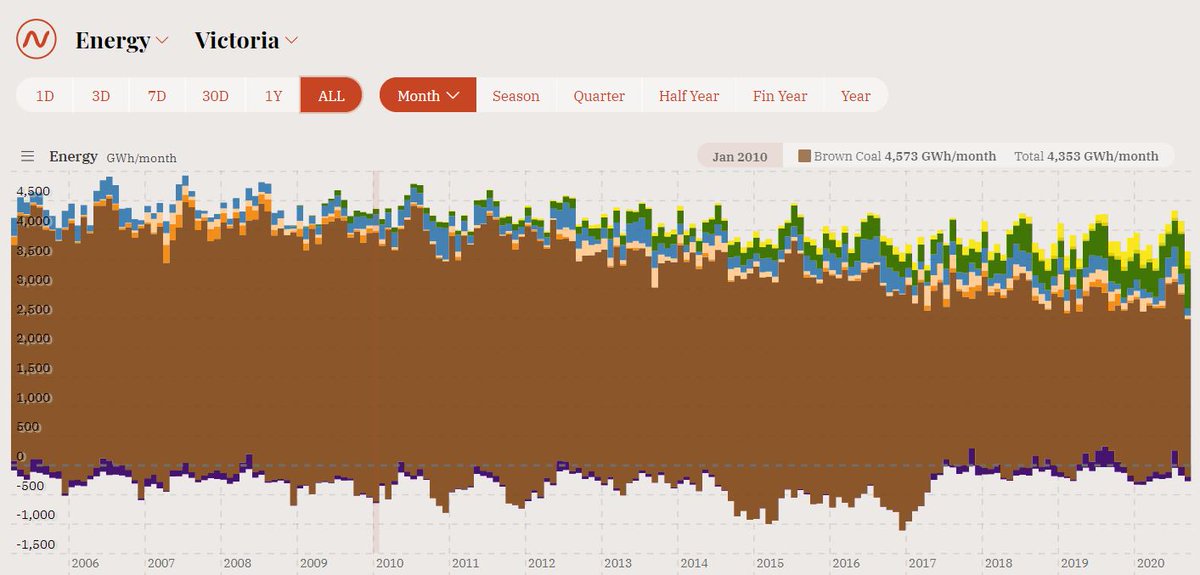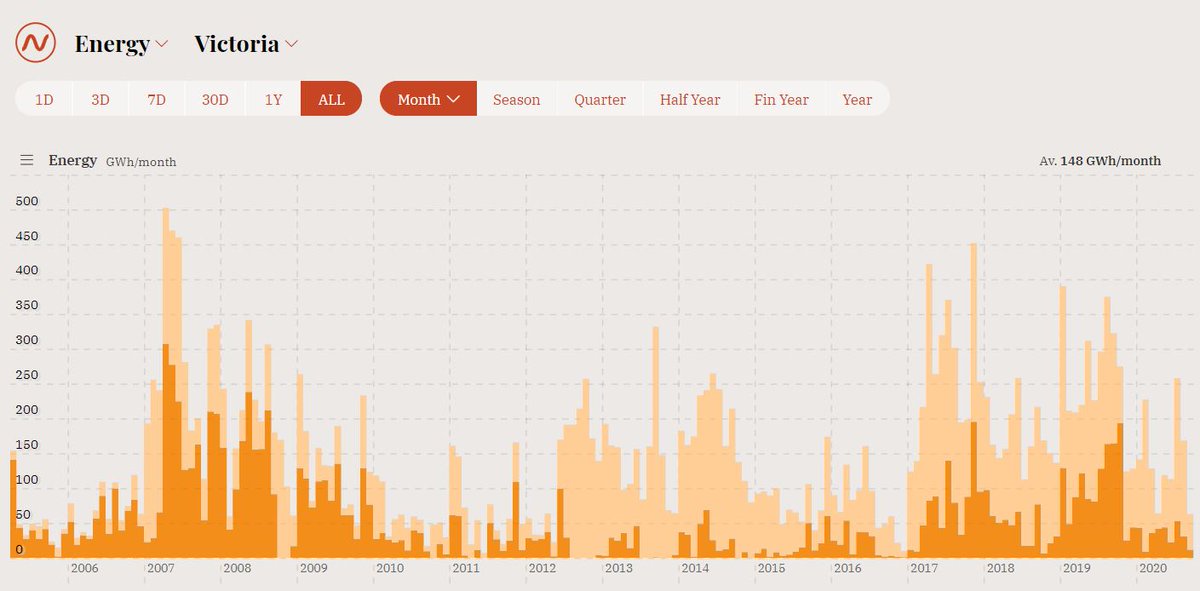"More renewables leads to more gas!" they said, forgetting that maths is a real thing. A quick explanation of why this isn& #39;t happening and won& #39;t.
Consider our grid right now, some renewables, some fossil fuels. The renewables respond to their weather and make power
Consider our grid right now, some renewables, some fossil fuels. The renewables respond to their weather and make power
The bit not currently provided by renewables we can call residual demand.
Now, assume that the renewables make power at *exactly* the same times throughout the year. No variation per site, renewable generation is fixed in capacity and time.
Now, assume that the renewables make power at *exactly* the same times throughout the year. No variation per site, renewable generation is fixed in capacity and time.
Now we add a new wind farm. For this new wind farm to *not* reduce the residual demand it must also generate power at *exactly* the same time as all renewables in existence, AND these times must already be at 100% renewables.
This is basically impossible. Any new kWh generated during residual demand will reduce residual demand. For more renewables to *not reduce* gas use, any new renewables would have to be built to perfectly coincide with existing generators AND there profile would have to be fixed.
What actually happens is renewables developers look at data. They look at that residual demand (or more likely at the times of peak power prices) look at their resource output and choose projects that maximise their price by generating into periods of low competition.
How could renewables even increase gas use? Maybe when a coal plant closes and a big lump of generation disappears, existing gas capacity might rise to meet the demand, like when Hazelwood turned off in 2017. That brown wedge getting smaller in 2017
If we just leave Vic gas use, there seems to be a bit of a rise at the start of 2017, but probably trending down after that.
So I& #39;ll accept that there might be a rise in gas use straight after a big coal plant closes, but then the rest of the market swings into action
So I& #39;ll accept that there might be a rise in gas use straight after a big coal plant closes, but then the rest of the market swings into action

 Read on Twitter
Read on Twitter



